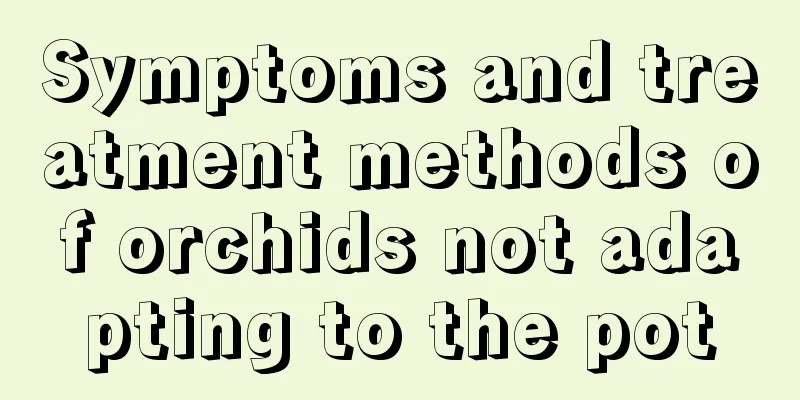Symptoms and treatment methods of orchids not adapting to the pot

1. Performance1. Leaves: The leaves are wilted and dull, with bent and dry edges, and even dehydrated. In severe cases, black spots and burnt ends may appear on the leaves. This means that the plant has not acclimatized. 2. Leaf buds: No new buds emerge for a long time. Or the plant has new shoots, but the growth rate is slow and it is difficult to grow into seedlings. Even if the leaf buds have emerged from the soil, if there are signs of dead buds, it means that the orchid has not adapted to the pot. 3. Roots: If the orchid has not acclimatized to the pot, the roots will not grow well. Although it will grow roots or new roots, they are not normal. Or the orchid roots do not grow, and the new seedlings that should take root do not take root either. Additionally, the roots will become hard and inflexible. II. Solutions1. The most critical way to deal with orchids that refuse to adapt to the pot is to allow the orchid to revive from dormancy and resume normal growth. The plant can be fully nourished to force it to recover. 2. To grow orchids, you must first take good care of the roots, and the key to growing good orchid roots lies in the planting material. If the planting material is not suitable, the orchid will not adapt to the pot. So you may need to replace the potting soil. You should choose granular orchid planting materials, because granular planting materials have good air permeability, drain water and retain moisture, which is beneficial to the growth and breathing of orchid roots. The particle size should be around 0.5-2cm. 3. An inappropriate maintenance environment will also make it difficult for orchids to adapt to the pot. During the acclimatization period, it is best to place the plant in a well-ventilated, cool place without direct sunlight. This will greatly reduce the yellowing of orchid leaves. 4. Excessive watering after potting will make the orchid roots unable to breathe properly, affecting their normal rooting. Moreover, if the soil in the pot is too wet, it is easy for bacteria to grow. When the orchid is first planted in a pot, the soil should be a little drier, which is more conducive to the plant adapting to the pot and the growth of new roots. |
<<: The cultivation prospects and key points of cultivation technology of straw mushroom
>>: Cultivation technology and processing of Pinellia ternata
Recommend
How to propagate lily bulbs?
Lily is a flower that many people like. It is ver...
How to grow and water Mo Lan in winter
1. Adequate sunlight It has relatively high requi...
The leaves of lucky bamboo always turn yellow. Is it placed in the wrong place? Try to avoid these two places.
They can symbolize the meaning of the entire fami...
How to grow Japanese red maple bonsai
soil Red maple bonsai requires well-drained, loos...
How to deal with root rot in desert rose
1. Caused by excessive watering We can clearly se...
The difference between Fengdan and Peony
1. Blades When the leaves are unfolded and observ...
How do sunflowers turn back at night, and why do they always face the sun?
1. How to turn back at night After the sun goes d...
How to prune purple leaf plum
How to prune purple leaf plum After the purple-le...
How to transplant succulents so that they change color (steps for beginners to grow succulents)
How to transplant succulent plants There are usua...
When is the best time to plant konjac?
Many friends like to order konjac tofu when they ...
What vegetables are suitable to grow in September?
What vegetables are suitable to grow in September...
Can lily roots regenerate?
1. Whether it can be regenerated The roots of lil...
Tiger Pilan cultivation methods and techniques
Tiger Piraja , as a member of the succulent plant...
How to grow round-headed jade plant
1. Breeding conditions 1. Soil: The cultivation o...
How to plant blueberry seedlings bought online?
Blueberry is a common fruit with soft flesh, juic...









